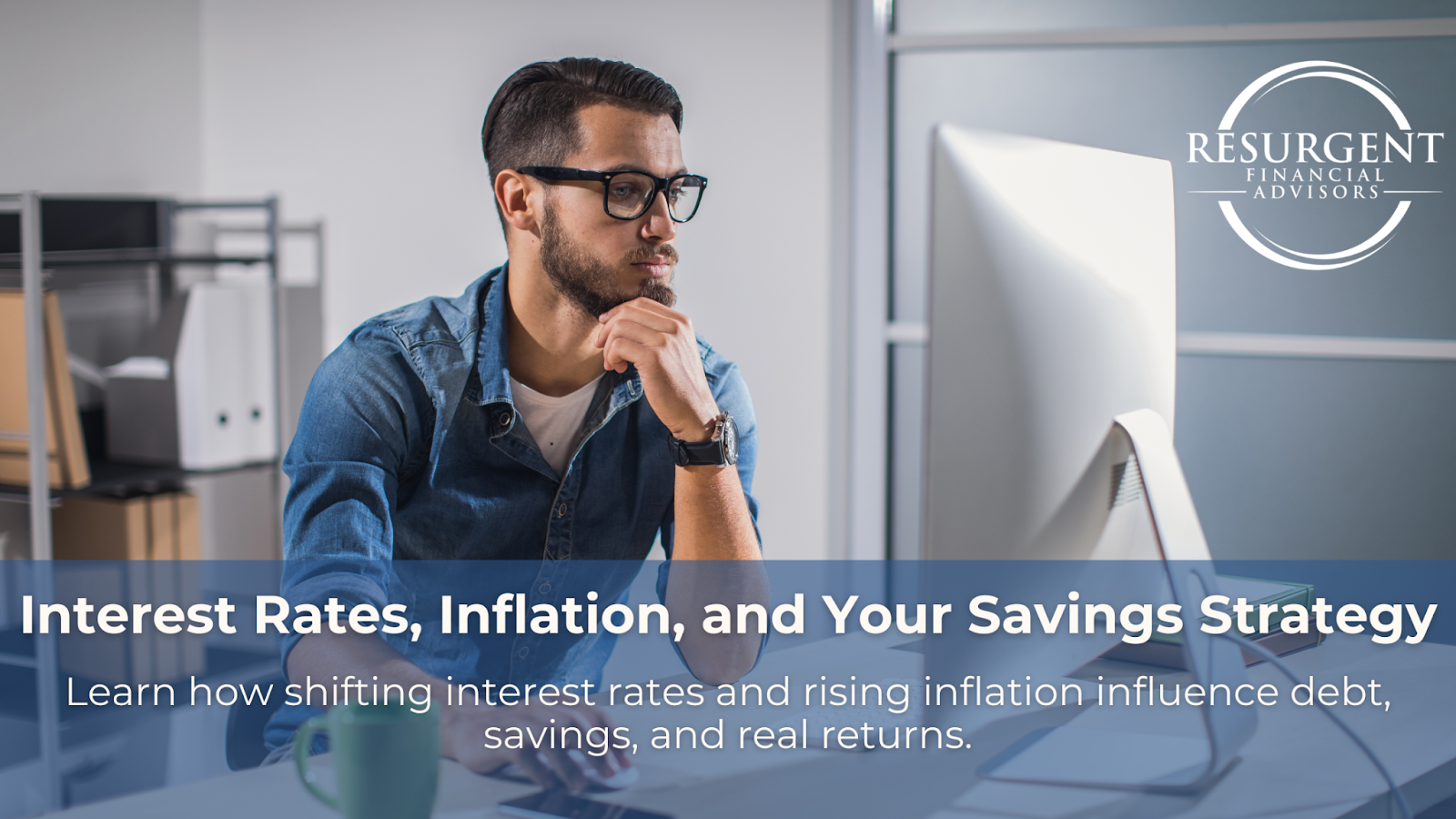By David Hughes | Resurgent Financial Advisors
If there’s one financial topic that refuses to leave the headlines, it’s the duo of interest rates and inflation. These two forces touch almost every part of our financial lives – from mortgage payments to grocery bills to the returns on our savings accounts. Yet for all the talk, many people still feel uncertain about what rising (or falling) rates and inflation actually mean for their money.
The truth? You don’t need a PhD in economics to understand how these forces work. With the right perspective, you can see how interest rates and inflation affect your savings and identify strategies to keep your financial footing steady – without falling into panic or paralysis.
Understanding Interest Rates: The Cost of Money
At its core, an interest rate is simply the cost of borrowing money – or the reward for lending it. When rates rise, borrowing becomes more expensive (think mortgages, car loans, and credit cards). On the flip side, savers may finally see a silver lining: higher yields on savings accounts and certificates of deposit.
For decades, low interest rates were the norm, making borrowing cheap but savings sluggish. Recent shifts have flipped that narrative. Now, the balance between debt and savings is front and center in household finances.
Inflation: The Silent Erosion
While interest rates are obvious – you see them in loan paperwork and account statements – inflation is more subtle. It creeps into the grocery aisle, utility bills, and dining receipts. Inflation simply means your dollars don’t go as far as they once did.
Even modest inflation, compounded over time, can eat away at purchasing power. If your money earns 2% in savings but inflation runs at 3%, you’re effectively losing ground. That’s why balancing savings returns against inflation is a constant concern.
The Push and Pull: Rates vs. Inflation
Here’s where things get tricky: central banks raise interest rates to fight inflation, but higher rates can also slow economic growth. Savers may cheer as yields climb, while borrowers groan at steeper payments. It’s a financial tug-of-war that affects households differently depending on their situation.
Someone carrying high-interest credit card debt may feel crushed by rising rates. Meanwhile, a diligent saver with cash in a high-yield account may finally feel rewarded. Neither perspective is wrong – they’re just two sides of the same coin.
What Savers Can Consider
While every individual’s situation is unique, here are themes to keep in mind as you think about your savings in the current environment:
- Diversification Matters: Relying on a single type of account may leave you vulnerable. Mixing short-term liquidity with longer-term growth vehicles can balance stability and opportunity.
- Emergency Funds Are Still Essential: Rising rates and inflation don’t change the need for accessible cash in emergencies. Having reserves can reduce the stress of borrowing at higher costs.
- Watch Real Returns: Don’t just look at nominal interest rates – consider inflation-adjusted “real” returns to see whether your savings are keeping pace.
- Debt Management Is Key: Reducing high-interest debt can have as much impact on your financial health as chasing higher savings rates.
The Human Side of Inflation Anxiety
Financial discussions often ignore the emotional toll inflation takes. Watching everyday expenses climb can spark frustration or even guilt about spending. It’s important to acknowledge that feeling – and to know you’re not alone. These pressures affect families everywhere.
Taking practical steps, even small ones, can help regain a sense of control. Whether it’s rebalancing savings, revisiting budgets, or simply understanding how rates and inflation work, knowledge itself can be reassuring.
Interest rates and inflation aren’t passing trends – they’re ongoing forces in the economy. While no one can predict exactly where they’ll go next, understanding their impact helps you make informed decisions about saving, borrowing, and planning ahead.
This article is for informational purposes only and should not be construed as individualized investment advice. Every financial situation is different, and readers should consider speaking with a qualified professional before making decisions based on interest rate or inflation trends.


